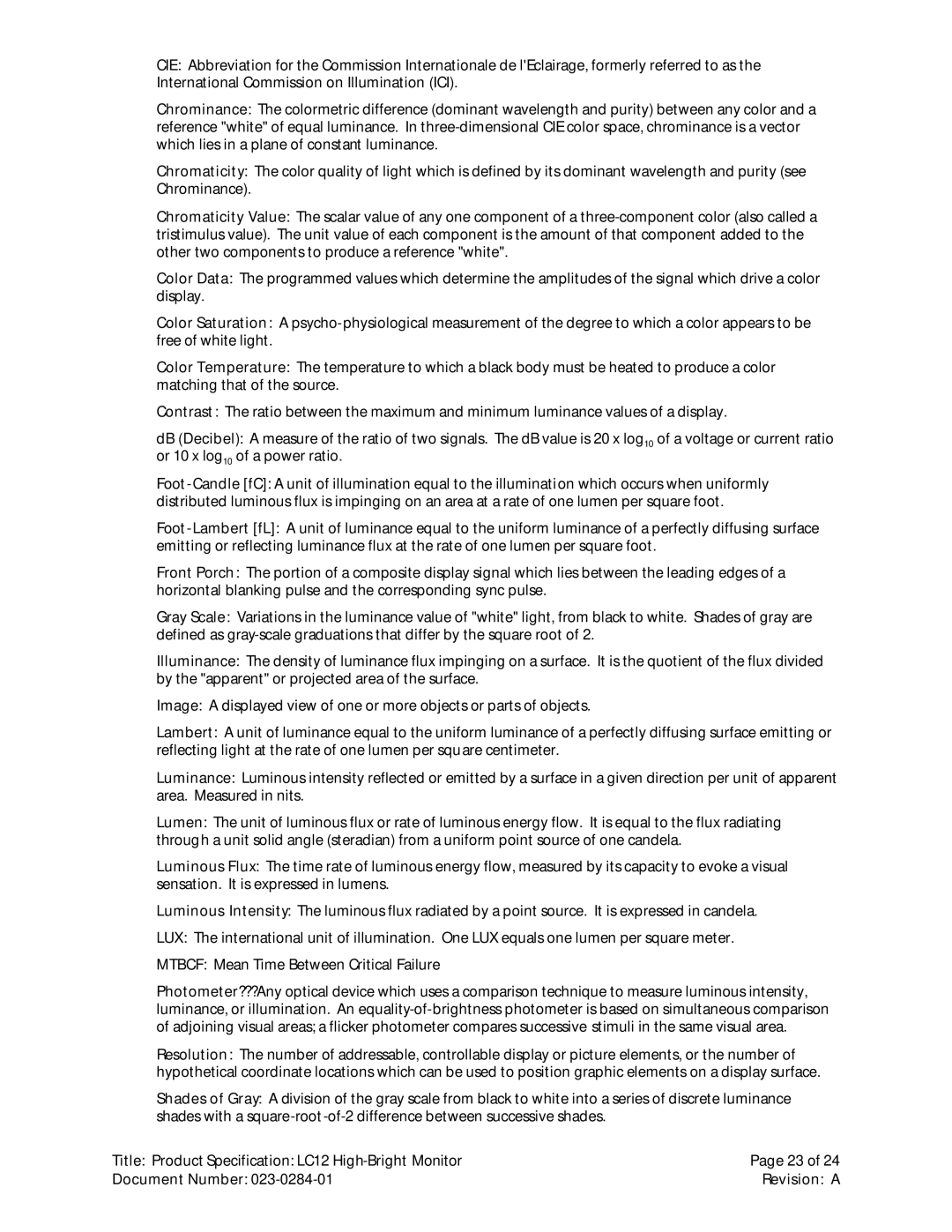CIE: Abbreviation for the Commission Internationale de l'Eclairage, formerly referred to as the International Commission on Illumination (ICI).
Chrominance: The colormetric difference (dominant wavelength and purity) between any color and a reference "white" of equal luminance. In
Chromaticity: The color quality of light which is defined by its dominant wavelength and purity (see Chrominance).
Chromaticity Value: The scalar value of any one component of a
Color Data: The programmed values which determine the amplitudes of the signal which drive a color display.
Color Saturation: A
Color Temperature: The temperature to which a black body must be heated to produce a color matching that of the source.
Contrast: The ratio between the maximum and minimum luminance values of a display.
dB (Decibel): A measure of the ratio of two signals. The dB value is 20 x log10 of a voltage or current ratio or 10 x log10 of a power ratio.
Front Porch: The portion of a composite display signal which lies between the leading edges of a horizontal blanking pulse and the corresponding sync pulse.
Gray Scale: Variations in the luminance value of "white" light, from black to white. Shades of gray are defined as
Illuminance: The density of luminance flux impinging on a surface. It is the quotient of the flux divided by the "apparent" or projected area of the surface.
Image: A displayed view of one or more objects or parts of objects.
Lambert: A unit of luminance equal to the uniform luminance of a perfectly diffusing surface emitting or reflecting light at the rate of one lumen per square centimeter.
Luminance: Luminous intensity reflected or emitted by a surface in a given direction per unit of apparent area. Measured in nits.
Lumen: The unit of luminous flux or rate of luminous energy flow. It is equal to the flux radiating through a unit solid angle (steradian) from a uniform point source of one candela.
Luminous Flux: The time rate of luminous energy flow, measured by its capacity to evoke a visual sensation. It is expressed in lumens.
Luminous Intensity: The luminous flux radiated by a point source. It is expressed in candela.
LUX: The international unit of illumination. One LUX equals one lumen per square meter.
MTBCF: Mean Time Between Critical Failure
Photometer???Any optical device which uses a comparison technique to measure luminous intensity, luminance, or illumination. An
Resolution: The number of addressable, controllable display or picture elements, or the number of hypothetical coordinate locations which can be used to position graphic elements on a display surface.
Shades of Gray: A division of the gray scale from black to white into a series of discrete luminance shades with a
Title: Product Specification: LC12 | Page 23 of 24 |
Document Number: | Revision: A |
